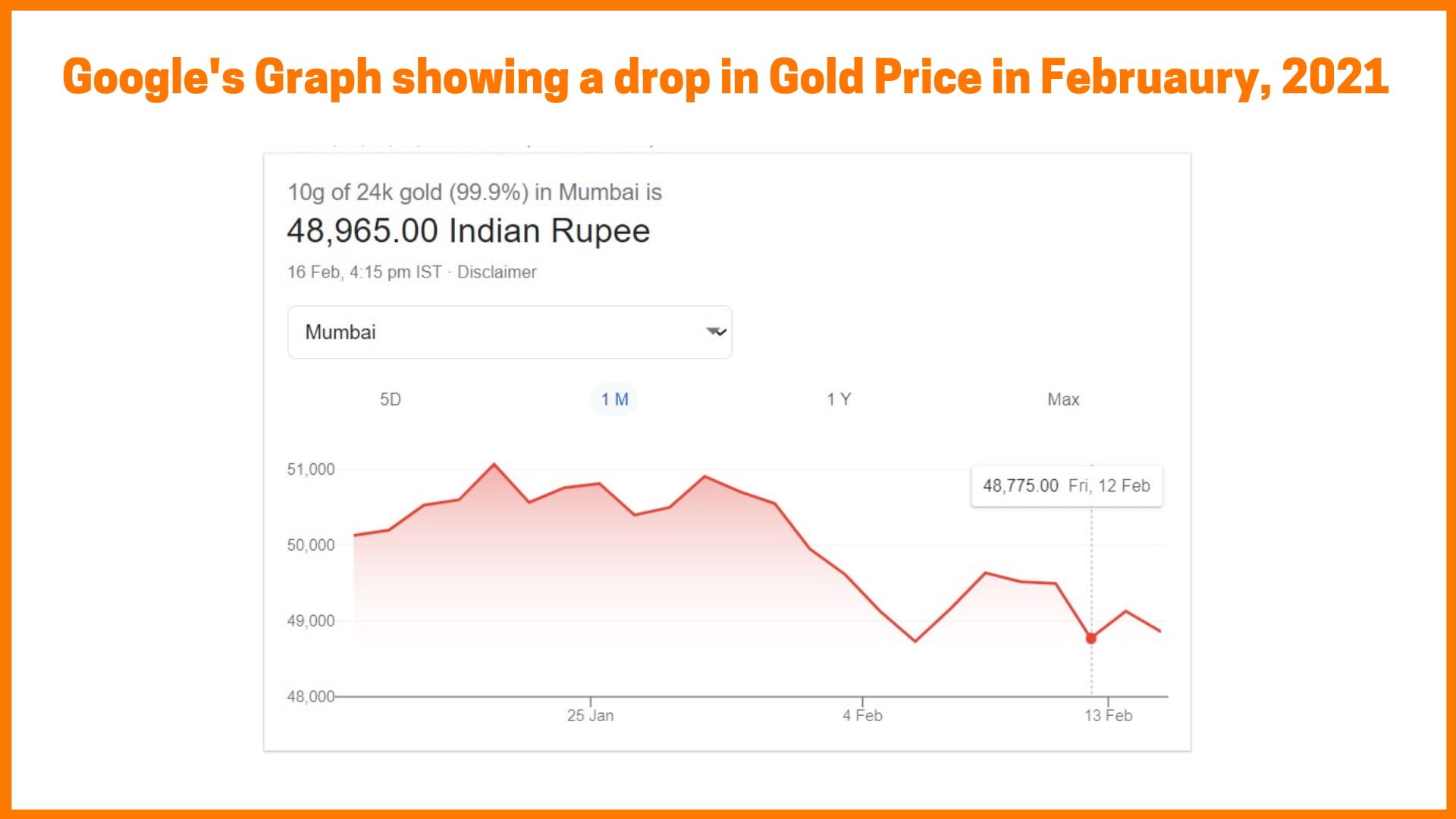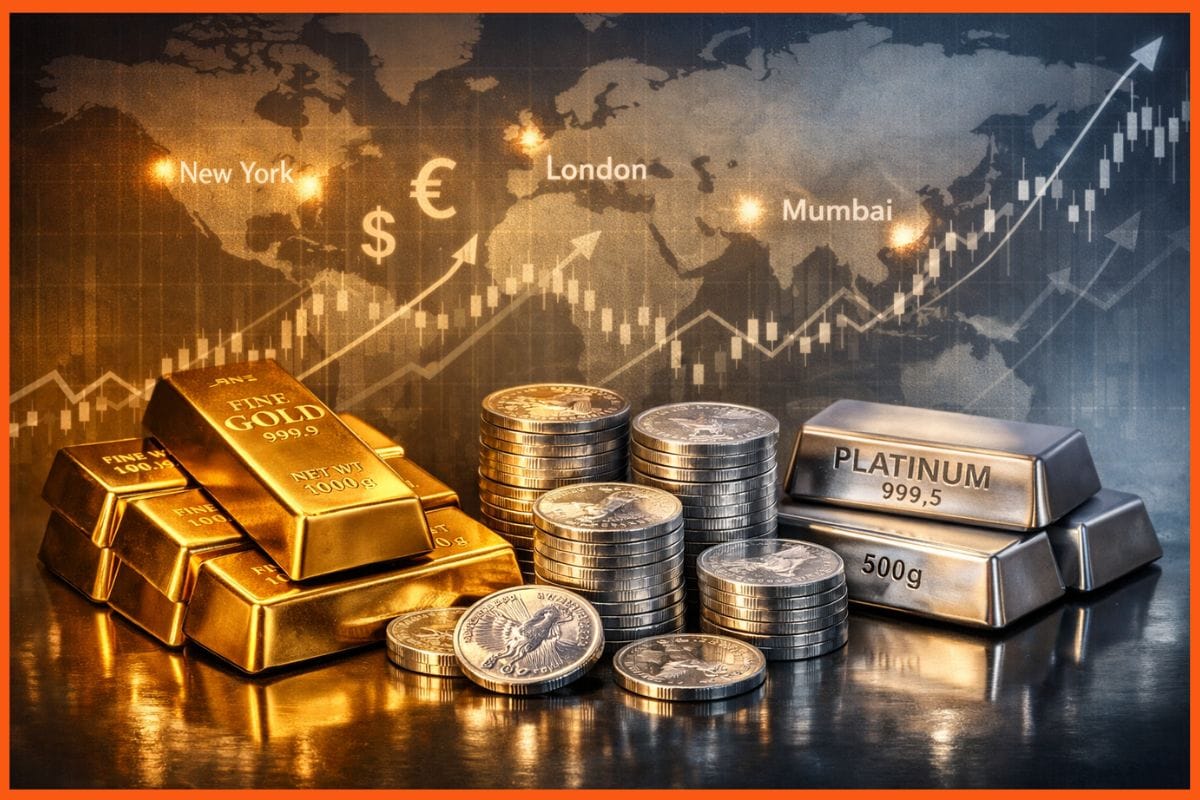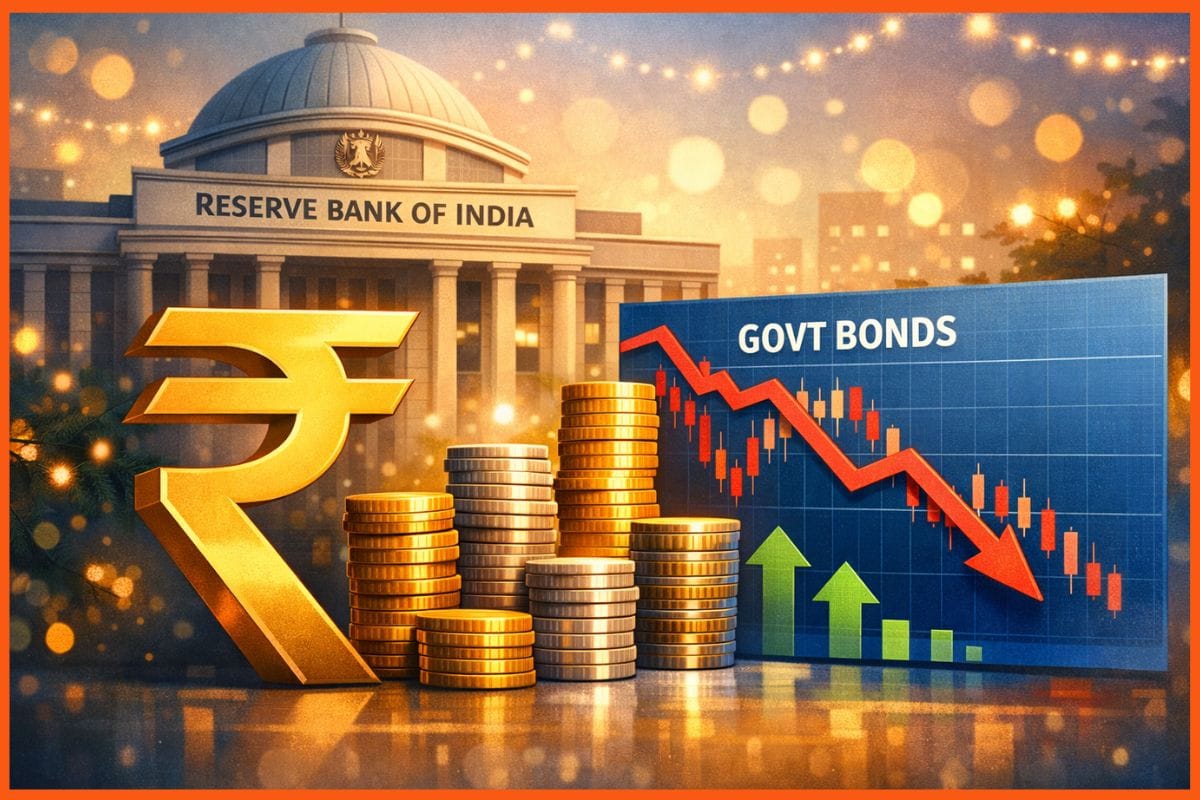Why Gold Prices are falling in February 2021?
Gold
Gold has always been a safe harbor for investors. Low volatility makes it a reliable investment option. The glittering metal has a prominent place in the Indian households. Gold in India isn’t just an investment but a tradition. It not only signifies wealth but also is a matter of prestige for many Indians. Indian festivities and weddings are incomplete without the exchange of gold. It has dominated equity and real estate investments as it has a lower exposure to risk and has comparatively better returns.

Why Gold prices are falling in February 2021?
Global significance of Gold
Central Financial Systems and Gold
Factors driving Gold Prices
History of Gold rates in India
How Pandemic has affected Gold prices?
World Gold Council
Gold prices across India
FAQs
Why Gold prices are falling in February 2021?
Gold prices are propelling downwards since the end of January 2021. Gold rates have hit a low in all the major cities in India. On the Multi Commodity Exchange of India (MCX), gold prices dropped by Rs 457 to hit Rs 46,390 per 10 gram, after the government announced a cut in the import duty on precious metals. Notably, the customs duty on gold and silver was reduced to 7.5%. So far, gold has witnessed a fall of more than 2%, and has dipped more than Rs 7000 from all time high in August last year. In the previous trade, the precious metal had closed at Rs 46,847 per 10 grams after a fall of Rs 661.
On the global front, gold prices decked to $1830 from $2200. Gold is traded against the US dollar. As the dollar gains, prices of gold reduce since gold becomes expensive in other currencies. Political and economic activities in the USA have paved way for the gains in value of US dollar. Gold prices and the US dollar are inversely proportional, because the yellow metal is dollar dominated. When the value of dollar increases compared to other currencies around the world, the price of gold tends to decrease in the US dollar terms. A falling dollar increases the value of currencies in other countries, including the prices of commodities like gold resulting in increase in the price of gold and vice versa.

Global significance of Gold
Worldwide, gold is seen as a commodity with innate value. Gold remains, and will continue to remain precious due to its rarity and ability to create jewelry and other objects. It has also been an investment option for many investors. Unlike any other commodity, gold is largely influenced by the track run of the economy. Over the course of history, gold prices seem to counteract the fluctuations in an economic cycle.
Central Financial Systems and Gold
Global gold reserves have been recorded to 33,000 tons, almost one-fifth of the total amount of gold mined. In the last decade, many national banks have become net buyers of gold reserves.
Central banks have gold reserves for many reasons: to pacify risks, to hedge against inflation and promote economic stability. According to a report published by the World Gold Council, central banks have purchased 668 tons of gold in 2019.
The Central bank of America is said to have the largest gold reserve with 8,133 tons of gold in its vault, valued at $10.9 billion dollars. The Reserve Bank of India is ninth on the list of top central banks holding gold reserves. India has increased its Gold reserves by 22.7 tons in 2020 and as of today holds 668 tons of the yellow metal in its vaults.

Factors driving Gold Prices
As noted earlier, gold is dominated by the US dollar. A surge in the dollar keeps the gold rate lower and more controlled, while a weaker US dollar takes the gold price higher through increase in demand.
The amount of gold held by the central banks around the world also caters in determining the factors driving the gold prices. Every Central Financial system has gold vaults to protect itself from inflation and pacify losses if any. When central banks purchase gold, it affects the supply and demand of the country’s economy resulting in changes that are inflationary in nature.
In 2019, 4400 tons of gold was demanded by the jewelry industry. Jewelry and industrial demands decide which way the gold prices go. India, China and the USA are the largest consumers of gold jewelry in terms of volume.

Most investors have turned to gold as an investment especially during times of economic recession, political instability or unrest due to global movements. Gold, compared to equity and real estate, is considered a much safer option in terms of returns.
Gold mining and extraction is an important factor in determining the prices of gold all over the world. China, Australia, USA and Russia are the major players that are actively involved in the mining process. Hazards faced by the miners makes it more challenging to acquire gold. These challenges add more cost to gold mining or production resulting in higher gold prices.
History of Gold rates in India
Gold has seen huge appreciation in its value and especially in India, this value is very significant since the country has a comprehensive political and economic history. The annual average price of gold (24carat gold per 10 grams) in 1964 was Rs 63.25. A few decades later in the 1990's the price ranged from Rs 3,200 to Rs 4,400. In the early 2000's, gold was trending at Rs 5,850. The next decade that is 2008 to 2016 saw gold prices range between Rs 12,800 to Rs 28,263. 2020 saw all time high in gold's value at Rs 48,651.
How Pandemic has affected Gold prices?
The restrictions imposed by governments have caused temporary closures of mines. Lack of supply and transportation have an overall impact on the pricing. Among other world crises, Covid 19 has seen the largest surge in gold prices. After the first covid case in China, the annual demand rose by 38%. Following the Covid-19 crises, there is greater uncertainty in the global market and has propelled the gold prices.

World Gold Council
The World Gold Council, with a purpose to stimulate and sustain the demand of gold, provides industry leadership and is the global authority on the gold market.
WGC is the market development organization for the gold industry and its purpose is to put gold as investment in the frontier. It strives to make gold mainstream against global, political and economic backdrops. The organization has launched a web tool called Qaurum, to help investors understand the drivers of gold’s performance. It specifically demonstrates how gold behaves in various macroeconomic regions.
Gold prices across India
Gold price in India today is Rs 47000 for 24 carat gold per 10 grams and Rs 46000 for 22 carat gold per 10 grams. This value varies across the country’s major cities. Gold price (24 carat gold per 10 grams) in the country's capital, Delhi, is Rs 56,020, in Bangalore and Hyderabad its Rs 48,290, and in Mumbai and Pune its Rs 47000. At the moment, Kerala has the lowest gold rate in India which is Rs 46,950.
Conclusion
Gold is a precious metal. It has emotional, cultural and financial value and people across the globe buy gold for different reasons. These reasons have been drawn from various socio-cultural factors, local and global market conditions and macroeconomic factors.
For centuries it has been a safe haven for developed and developing economies as a hedge against inflation. Economic and global crises have widely determined the prices of gold and will continue to do so. Financial experts believe that gold will remain investors’ favorite and for the likes of the glittering metal, will surely appreciate in value.
FAQs
What is the present price of gold?
In India, the highest price of gold is Rs 47000 (24 carat gold per 10 grams) and lowest price is Rs 46,950. In the global market the price of gold is $1830 dollars.
Why gold prices are decreasing?
Gold prices depend on how the US dollar rallies in the global market. US dollar has gained in value and this has caused the decline in gold prices.
Is it a good time to buy gold now?
This is the right time to buy gold since prices have come down by Rs 7300 from its record high prices.
What will gold be worth in the next decade?
The World Bank predicts that gold prices will increase by 50% in the next 10 years.
What is the highest price of gold in history?
On August 7, 2020 gold hit its highest ever mark valued at $2,067.15. Later, during the Covid 19 pandemic it was valued at $2000 dollars.
Must have tools for startups - Recommended by StartupTalky
- Convert Visitors into Leads- SeizeLead
- Website Builder SquareSpace
- Manage your business Smoothly Google Business Suite






